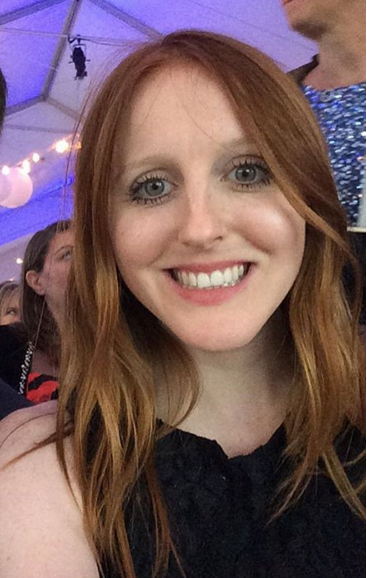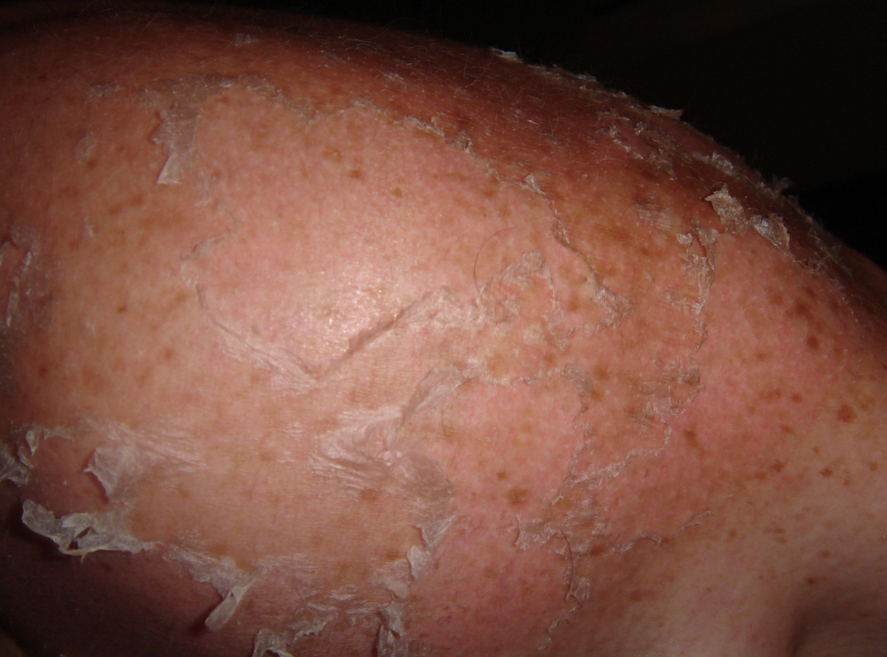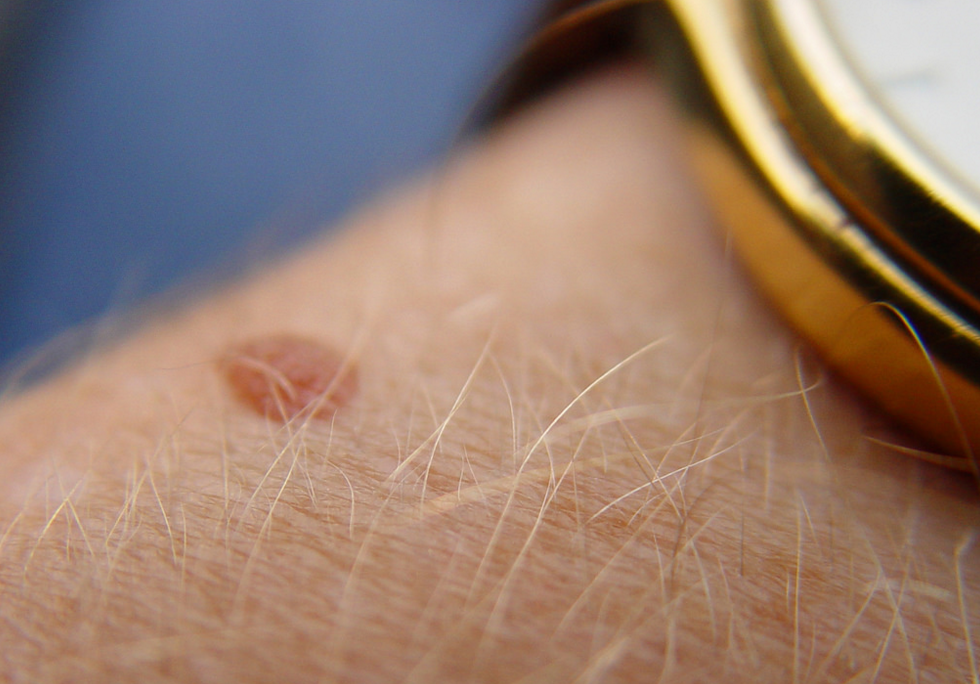Here's How Bad Sunburns Increase Your Risk of Skin Cancer

By:
As a natural redhead with pasty skin and a family history of melanoma, I've always feared that skin cancer is inevitable for me — especially since I was raised in sunny California.
Growing up, I had many disastrous encounters with the sun. Though my parents made me wear a T-shirt to the pool at camp, the sun always managed to fry the small patches of my body that were uncovered. Summer always came with at least one awful sunburn each year no matter how much sunscreen I lathered onto my skin.
Just five bad sunburns hike up your risk for skin cancer.
Research published in 2014 in the journal Cancer Epidemiology, Biomarkers & Prevention found that having at least five blistering sunburns between the ages of 15 and 20 years gave people a nearly 70 percent increased risk of getting basal cell carcinoma (BCC) and squamous cell carcinoma (SCC) and an 80 percent increased risk of developing melanoma, which the Mayo Clinic calls "the most serious type of skin cancer." BCC and SCC are considered the two most common skin cancers, according to the Skin Cancer Foundation, and can be deadly if untreated, but melanoma is considered more severe and causes the most deaths.
The 2014 study, which followed more than 100,000 white registered nurses for around two decades, also found that young white women faced a higher risk of developing melanoma if they had sun exposure earlier in life.
“Our results suggest that sun exposures in both early life and adulthood were predictive of non-melanoma skin cancers, whereas melanoma risk was predominantly associated with sun exposure in early life in a cohort of young women,” study author Dr. Abrar A. Qureshi said in a 2014 release for the American Association for Cancer Research.
 Flickr/Rob! - flickr.com
Flickr/Rob! - flickr.com
The Mayo Clinic states that the exact cause of melanoma is unclear but that "exposure to ultraviolet (UV) radiation from sunlight or tanning lamps and beds increases your risk of developing melanoma." According to the Mayo Clinic, melanoma appears to be increasing in people under 40, particularly women. Statistics from the American Cancer Society show that melanoma rates have been rising over the past 30 years, and last year, the organization projected 76,380 new melanoma diagnoses for 2016. If if melanoma continues to increase at the current pace, they predict 112,000 new cases of melanoma in 2030.
Dr. Kristen Kelly, the clinical vice chief of dermatology at the University of California-Irvine School of Medicine, was not involved in this study but cited it in a phone interview about sun damage with ATTN:. Dr. Kelly told ATTN: that this research does not necessarily mean that people who have had fewer than five blistering sunburns are not at risk of getting skin cancer.
 Flickr/Butz.2013 - flickr.com
Flickr/Butz.2013 - flickr.com
"That doesn't mean that it's OK to get four blistering sunburns and that five would be a problem," Dr. Kelly said. "Different people have different risks. The study does show that blistering sunburns are a problem, and I would think that even one blistering sunburn may increase your risk a little bit. If you're a person who might be particularly susceptible [to skin cancer], and there are people who are susceptible for all different kinds of reasons, even a small increase could be a problem."
Avoiding sunburns entirely is a good way to prevent skin cancer, especially burns early in life.
Sunburns don't need to be blistering to increase one's chances of developing cancer later in life, Dr. Neil Box, an investigator at the University of Colorado Cancer Center and assistant professor of dermatology at the Colorado University School of Medicine, said in a release last year.
"One bad burn as a child makes you half-again more likely to develop melanoma as an adult," he said.
Dr. Janellen Smith, a dermatology professor at the University of California, Irvine School of Medicine, agrees. "The risk of skin cancer increases with each sunburn, starting with the first, " she told ATTN: via email. "Children and young adults are particularly susceptible to the damage and people with a family history of skin cancer and sensitive skin are at higher risk."
The 2014 study also warned that people with red hair, a high mole count, or sensitive skin should be particularly mindful of sun exposure early in life.
These characteristics can increase your risk of skin cancer. People with red hair tend to be more sensitive to the sun because they have lower levels of melanin, the pigment responsible for hair, eye, and skin color and can protect the skin by absorbing UV radiation.
Moles are a risk factor too. Last year, researchers from King's College London published a study that found that having more than 11 moles on one arm increases one's risk of developing melanoma, since the cancer develops from abnormal moles.
Those with a history of bad sunburns might also be concerned that this will inevitably give them health problems at some point in life.
Dr. Kelly said that you can't "undo" the damage of sun exposure, but you can "slow down the progression" of potential damage and health conditions.
"For people who have significant sun damage, if they start taking measures to protect themselves," such as using sunscreen and wearing a hat, "they can't eliminate what they did, but they can slow down the progression of things," she said. "So I don't think it's ever too late for someone to start doing self-protection because they can impact somewhat things that develop in the future."
Protecting yourself from skin cancer is pretty simple.
 Flickr/Joe Shlabotnik - flickr.com
Flickr/Joe Shlabotnik - flickr.com
Dr. Kelly recommends daily sunscreen application, particularly to areas that get ample sun exposure. The American Academy of Dermatology recommends using Sun Protection Factor (SPF) 30 or higher, and if you're going to be spending a lot of time in front of the sun, you should re-apply sunscreen every two hours, especially if you're at the beach.
"There are certainly ways of minimizing the chances of developing skin cancer," Dr. Smith told ATTN:. "These include: Avoid the sun between the hours of 10 and 4 especially during the late spring and early summer. Stay in the shade, especially during midday hours, and avoid indoor tanning."
With regards to suspicious moles, Dr. Kelly said they should look "relatively even throughout."
"It doesn't have to be a perfect circle, but it should have a nice even edge to it," she said. "The colors should be relatively the same throughout. People used to say diameter, but I really don't like that one because you really want to catch melanomas when they're small. You don't want to wait until they're above a certain size. Anything that is changing [is worth checking out]."
Dr. Kelly also said moles that appear different than the rest of the moles on a person's body are potentially concerning.
 Flickr/Scott Robinson - flickr.com
Flickr/Scott Robinson - flickr.com
Many people visit the dermatologist only once a year for annual skin screenings, but Dr. Kelly told ATTN: that people with a family and/or personal history of skin cancer might want to see a dermatologist more frequently than that.
"Even if you saw a dermatologist three weeks ago and now you have a mole that is doing something funny or changing, even if it was pretty recently, it should be checked again," she said.
